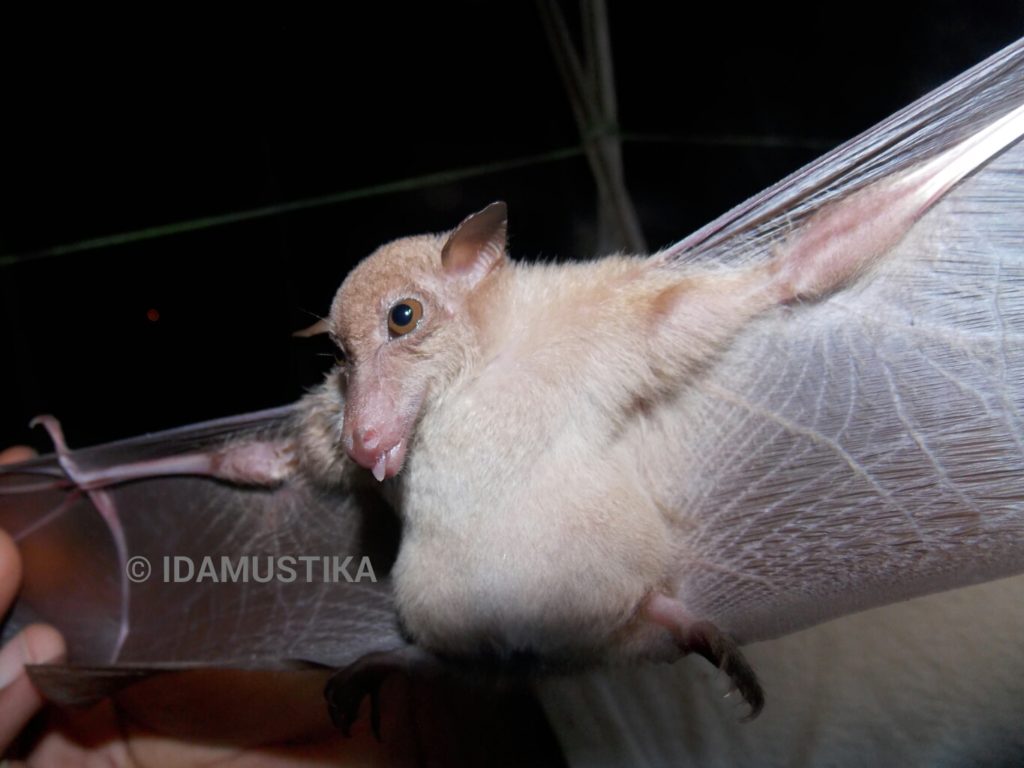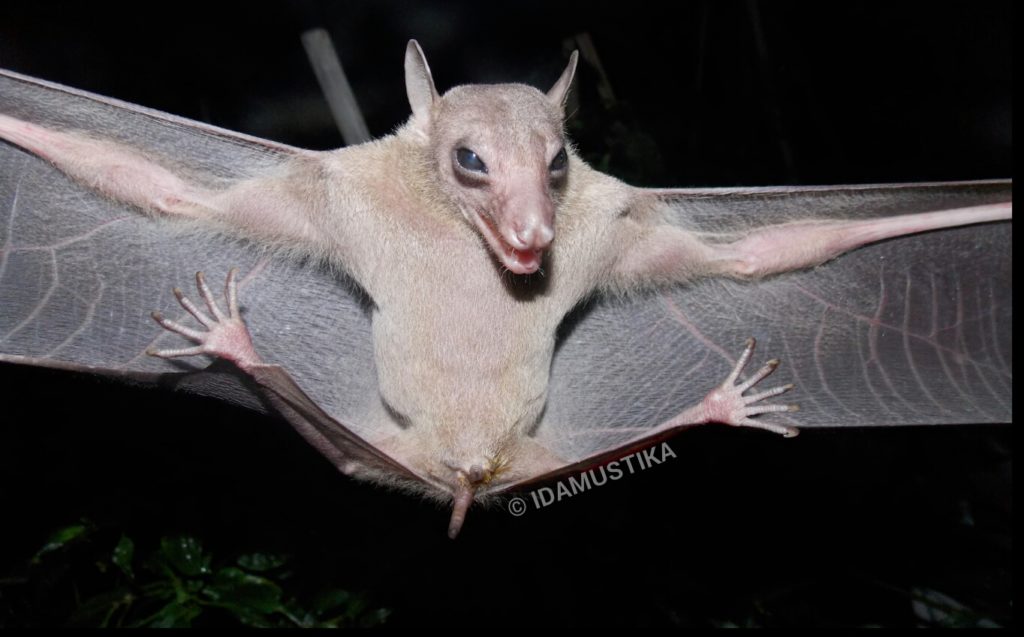Additionally, In the Cipaganti I have done my project about diversity of bats in Cipaganti, Garut, West Java to get my bachelor title. I start my project around one month ago. My project area is at the homerange of lorises. I use mist net to capture the bats, so I put the mist net in homerange of lorises. Bats is a nocturnal animal, like lorises. So I go to field at the night.

The order of bats is Chiroptera. Chiroptera has two suborder that is megachiroptera and microchiroptera. Thirtyfour species are “megabats”, member of the Suborder Megachiroptera. All living Megachiroptera belong to a single family, the Pteropodidae, or Old World Fruit Bats (Bonaccorso, 1998). The Suborder Microchiroptera, by contrast, contains mostly very small bats, but dominates in terms of numbers of living species and diversity of ecologycal types (Bonaccorso, 1998).
Pteropodidae includes about 186 species of bats that feed chiefly on fruits, leaves, flowers and flower product. Distributed in Europe, Africa, Asia, Auatralia and Oceania (Mickleburgh et al 2002; Simmons 2005). They have strong muzzleand jaws. Do not possess noseleaf or tragus. Noseleaf is a simple to complex structure derived from the skin around the nose in some bats. Tragus is a cutaneous projection at the opening of the external ear. Pteropodidae have eyes are large. They possess keen sense of smell. Ears simple. Tail small or absent, and proximal part of the caudal vertebrae included, the distal ones are free. Twenty one genera have been reported from Indonesia (Suyanto, 2001). On my project, I have found three genera of the twenty one in Pteropodidae, that is Cynopterus, Eonycteris, and Macroglossus.
Cynopterus Cuvier, F., 1824 – Medium sized fruit bats with short tail that is half enclosed within the interfemoral membrane. Muzzle short, and has deep emargination between the projecting nostrils. Both the first and second fingers have distinct claws. Rostrums short. Two pairs of lower and upper incisors present (Srinivasulu, 2010). On my project I have found three species of this genera, that is Cynopterus sphinx, Cynopterus minutus, and Cynopterus titthaecheilus.
Eonycteris Dobson, 1873 Medium-sized fruit bats with well-developed tail. Muzzle long and thin, and has deep emargination between the projecting nostrils. Only the thumb is clawed, second digit lacks claw. Ears are narrowly rounded. Interfemoral membrane very moderately broad, tail and calcar well developed. A pair of large anal glands present. Tongue is sharply pointed and highly protrusible with well-developed unfringed filiform papillae at the tip. Rostrum long and narrow. Two pairs of lower and upper incisors present (Srinivasulu, 2010). On my project i have found one species of this genera, that is Eonycteris spalaea.
Macroglossus Cuvier, F., 1824 – Small to medium-sized fruit bats without or with rudimentary tail. Specialized for nectar feeding, muzzle long and narrow. The thumb and the second digit are clawed. Ears medium with narrowly rounded tips, and small antitragal lobes. Interfemoral membrane very narrow and is thickly haired. Tongue is sharply pointed and highly protrusible. Rostrum relatively long and narrow, braincase strongly deflected downwards. Two pairs of lower and upper incisors present. On my project i have found two species of this genera, that is Macroglossus sobrinus, Macroglossus minimus.
REFERENCES
Bonaccorso, F.J. 1998. Conservation International Tropical Field Guide Series : Bats of Papua New Guinea. Library of Congress Cataloguing. Washington DC.
Mickleburgh, S.P., A.M. Hutson & P.A. Racey. 2002. A Review of The Global Conservation Status of Bats. Oryx 36 (1): 18-34.
Simmons, N.B. 2005. Order Chiroptera, pp.312-529. In: D.E. Wilson and D.M. Reeder (eds.), Mammal Species of the World, 3rd Edition, Volume 1. The John Hopkins University Press, Baltimore, MD, USA. 2142 pp.
Srinivasulu, C., Paul A. Racey & Shahroukh Mistry. 2010. A key to the bats (Mammalia: Chiroptera) of South Asia. Journal of Threatened Taxa : 1009-1012.
Suyanto, A. 2001. Kelelawar di Indonesia. Pusat Penelitian dan Pengembangan Biologi. LIPI. Bogor.

